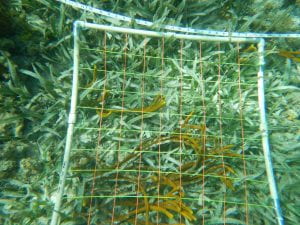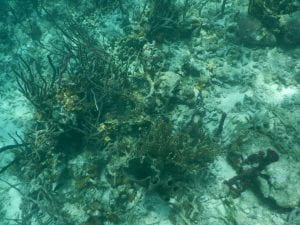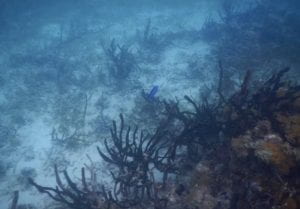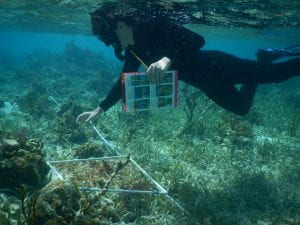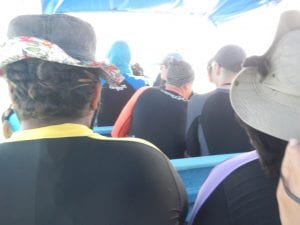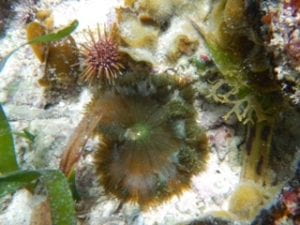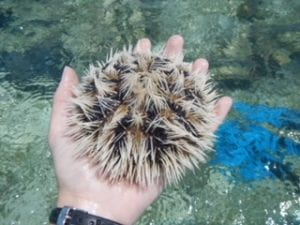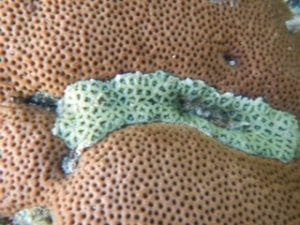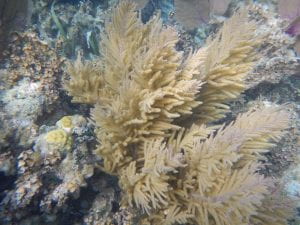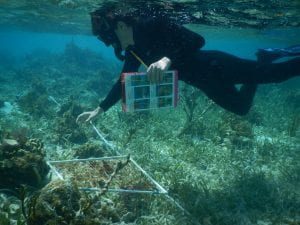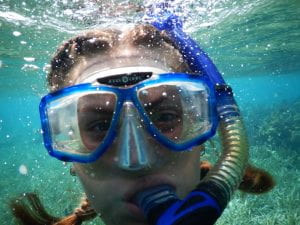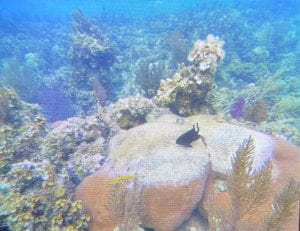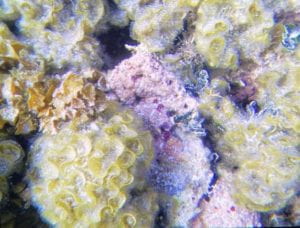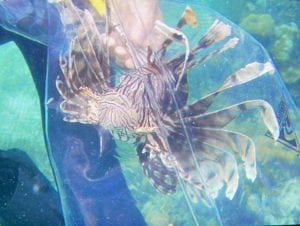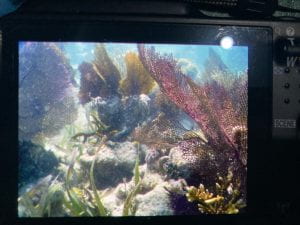The first thing we did after breakfast today was get our snorkel gear, quadrats, and transect tapes and pile into the boat again. We went to two more patch reefs, both of which were located in the Marine Protected Area (MPA). The data collection today went MUCH BETTER (some combination of better weather, deeper water, and more practice).
We got back just in time for lunch, which was barbecue chicken and macaroni and cheese (a little taste of home!) After lunch, we learned about green algae, crustaceans, and the effects of climate change on the reefs. After dinner, we had guest lectures from the Belize Fisheries Department and the Belize National Coast Guard (they do important work to ensure that Glover’s Reef Atoll stays beautiful and sustainable).
Between lunch and dinner, we had some free time where we could work on our field notebooks, take a nap, or go on an optional snorkeling excursion. Because I regretted my choice yesterday to abstain from snorkeling the second patch reef, I made sure I wouldn’t miss out on another opportunity to snorkel! We snorkeled just on the inside of the reef crest, and we saw tons of anemones and fishes, but unfortunately no sponges 🙂
Sponges seen in the MPA Today:
- Brown Variable Sponge
- Orange Icing Sponge
- Red Boring Sponge
- Scattered Pore Rope Sponge
- Erect Rope Sponge
- Branching Vase Sponge

